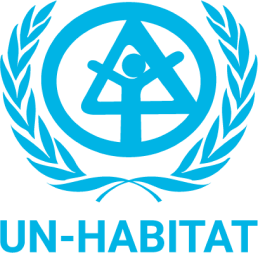Background
The August 2021 fall of Afghanistan’s government has caused a humanitarian crisis in the country’s cities. The fall of the government has meant many functions have ceased, resulting in critical municipal services being suspended. The unfolding crisis in Afghan cities is occurring in a context of severe underlying vulnerabilities. Nearly 10 million people live in Afghanistan’s cities, accounting for roughly 25 per cent of the country’s total population (DESA, 2019). The urban population is growing at a very rapid 3.34 per cent per year – the average for South Asia (already the second most rapidly urbanizing region on earth after Sub-Saharan Africa) is 2.41 per cent (ibid). The high rate of urbanisation is driven by insecurity, with displaced people often seeking the relative security of cities. In 2021 alone, nearly 700,000 people have been displaced in Afghanistan (OCHA, 2021). Many displaced people live in extremely challenging conditions in urban informal settlements: REACH Initiative’s (2020) survey of informal IDP and returnee settlements across Afghanistan identified over 1,000 such settlements, nearly 80 per cent are located in urban and peri-urban areas.
Considering the mentioned situation, the project provides lifesaving services and upgrades key infrastructure to meet the immediate needs of the vulnerable, including 50, 000 IDPs and returnees, build their long-term resilience to shocks, and contribute to sustainable development and peacebuilding in Kabul and Herat provinces of Afghanistan. The project utilizes a community-centered approach for implementing basic services and infrastructure projects.


Project Activities
- Spatial and community-based planning: (a) identify the needs of 50,000 vulnerable displaced people, focusing on the needs of women, youth and the disabled; (b) plan lifesaving WASH, shelter, services and community infrastructure investments.
- Based on action (i), implement community-based upgrading of WASH, shelter, services and community infrastructure for 50,000 people most in need using a cash-for-work implementation modality.
- Provision of spatial planning tools and data to enable coordinated humanitarian response (UN and NGO) for the effective, efficient distribution of lifesaving aid.
Outputs
- City-scale spatial and socioeconomic assessment of urban vulnerability and capacities
- Community-scale spatial and socioeconomic assessment of urban vulnerability and capacities
- Development of settlement plans for humanitarian investments in services and infrastructure
- Investments in lifesaving humanitarian services and infrastructure
- Provision and administration of cash-for-work
- Capacity building of CDCs and GAs
- Trainings and workshops humanitarian agencies on community spatial planning tools developed through project.
- Draft and publish Strategic Plan with partners


Key Results
In close cooperation with CDCs and through a voting process, below projects have been selected and will be implemented accordingly and several workshops have been conducted:
- 500m road construction in PD8 of Kabul
- 550m road construction (from Nilli Bagh area to PD7’s main road) in PD7 of Kabul
- 550m road construction from Takhnikum to Ali Malang area in PD7 of Kabul
- 900m road construction in PD17 of Kabul
- 2615m road construction in Jam area in PD6 of Herat
- 2700m road construction in Isaq Abad in PD11 of Herat
- 4 Community Action Plan workshops conducted in Kabul
- 3 Community Action Plan workshops conducted in Herat
- 4 CDCs documents revised in Kabul
- 3 CDCs documents revised in Herat
Donors and Key Project Stakeholders
Donor:
Government of Japan
Key Project Stakeholders:
Displaced Communities Residing in Kabul and Herat, Gozar Assemblies (GAs), Community Development Councils (CDCs), and Community-Based Organizations
Relevant Links
Story: アフガン女性のエンパワーメント:困難な状況に変化を

